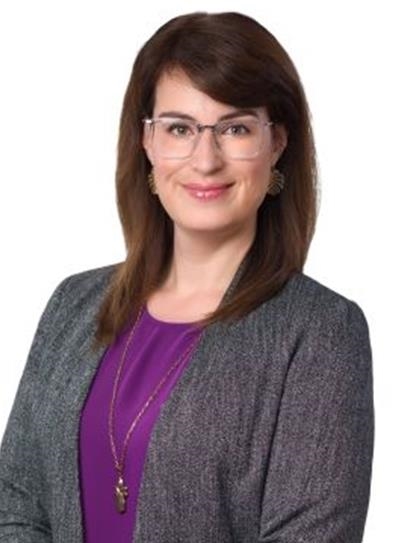CALGARY, AB – October 16, 2024 – Under the burden of high living costs, Albertans are making difficult sacrifices and finding ways to share expenses to make ends meet. According to the latest MNP Consumer Debt Index, conducted quarterly by Ipsos, more than a third (37%) of Albertans report turning to bill-splitting strategies such as carpooling, buying in bulk, sharing subscriptions and childcare, and living with others. More than one in 10 (13%) are saving money by living with friends, partners, or family members, or seeking out roommates or co-living spaces. Albertans and British Columbians are the most likely (35%) to say they’ve even resorted to eating less to save money.
“A bill-splitting boom is emerging across the country, and Albertans are actively adopting these strategies as they adjust to the high cost of living. Methods like sharing expenses and co-living highlight Albertans’ adaptability, but also underscore the financial strain many are experiencing,” says Lindsay Burchill, a Licensed Insolvency Trustee with Alberta-based MNP LTD. “Albertans are among the most likely to report cutting back on food just to get by, which is especially concerning. These strategies reflect the difficult situation many are in as costs of living soar, pushing some to look for creative ways to save.”
Albertans are making other sacrifices to manage costs. Compared to the other provinces, Albertans are the most likely to say they’ve tried to save money by grocery shopping more strategically (58%) or have stopped eating at restaurants or getting take-out (52%). Additionally, nearly half say they are avoiding impulse purchases (48%).
Cost-cutting measures and lower interest rates create breathing room in some household budgets
Perhaps in part due to prudent cost-cutting efforts and declining interest rates, Albertans are reporting some relief and improvements in their financial situation. Albertans are building up the bank this quarter, reporting they have $779 (+$44) left over at the end of the month on average. More than two in five (44%, -3 pts) Albertans say they’re $200 or less away each month from financial insolvency.
“Although cost-saving strategies and declining interest rates have improved how Albertans view their financial situation, a notable minority still indicate they are teetering on the edge of insolvency, underscoring their ongoing financial struggles,” says Burchill. “However, with financial pressures beginning to ease, many are discovering greater flexibility to tackle their debts and plan for a more secure financial future.”
Impact of interest rates on debt and financial outlook
With Albertans expecting interest rates to continue falling over the next few years, perceptions of their financial outlook have improved. Significantly more Albertans are looking positively to the future, with more than a quarter (27%, +8 pts) expecting their debt situation to improve over the next year. At the same time, fewer believe it will worsen (14%, -3 pts). Yet, while one in five (19%, +1 pt) say they’re much better equipped to manage an interest rate increase of one percentage point than they used to be, this proportion remains the lowest amongst the provinces.
Following three interest rate cuts this year, more than two in five (43%, -2 pts) Albertans remain concerned about their ability to repay their debt, even if interest rates decline. While slightly fewer this quarter say they will be in financial trouble if interest rates go up, more than half (52%, -2 pts) still indicate they would be in trouble.
“Even with cooling inflation and declining interest rates, many Albertans are still bearing the weight of significant debt. There has been some relief, but cutting costs alone may not be enough for those facing serious financial challenges,” explains Burchill. “For individuals looking for help to tackle their debts, consulting a Licensed Insolvency Trustee is an essential first step to understanding their options. Bankruptcy is just one of the solutions that exist to address debt struggles.”
Licensed Insolvency Trustees provide unbiased advice on options including debt consolidation, debt management plans, budgeting, Consumer Proposals, and Bankruptcy. They are the only federally regulated debt professionals who are authorized to administer government-regulated insolvency solutions such as Bankruptcies and Consumer Proposals.
“Bill-splitting may provide some financial relief in the interim, but this strategy often fails to address the underlying debt issues. For Albertans feeling overcome by debt, seeking advice from a Licensed Insolvency Trustee can pave the way to attaining long-term financial health,” says Burchill.
MNP’s extensive network of Licensed Insolvency Trustees provides free consultations in over 200 offices nationwide, delivering local, personalized support to help individuals navigate their debt options.
Looking ahead to how Albertans plan to cut costs or save money in the year to come, the survey revealed the following:
Albertans' top money-saving strategies for the next 12 months
- Bill splitting – 30%
- Avoiding impulse purchases – 18%
- Reducing utility consumption – 18%
- Moving somewhere more affordable – 15%
- Creating a budget / recording all expenses – 15%
- Negotiating bills – 14%
- Grocery shopping strategically – 13%
- Splitting grocery costs / buying in bulk with roommates, friends, or family – 13%
- Moving in with family, friends, a partner, or roommates – 12%
- Cancelling subscriptions – 12%
- Stopping eating in restaurants or getting takeout – 12%
- Going thrift shopping – 10%
- Cutting vices – 10%
- Finding free or low-cost entertainment – 8%
About MNP LTD
MNP LTD, a division of the national accounting firm MNP LLP, is the largest insolvency practice in Canada. For more than 50 years, our experienced team of Licensed Insolvency Trustees and advisors have been working with individuals to help them recover from times of financial distress and regain control of their finances. With more than 240 offices from coast to coast, MNP helps thousands of Canadians each year who are struggling with an overwhelming amount of debt. Visit MNPdebt.ca to contact a Licensed Insolvency Trustee or use our free Do it Yourself (DIY) debt assessment tools. For regular, bite-sized insights about debt and personal finances, subscribe to the MNP 3-Minute Debt Break Podcast.
About the MNP Consumer Debt Index
The MNP Consumer Debt Index measures Canadians’ attitudes toward their consumer debt and gauges their ability to pay their bills, endure unexpected expenses, and absorb interest-rate fluctuations without approaching insolvency. Conducted by Ipsos and updated quarterly, the Index is an industry-leading barometer of financial pressure or relief among Canadians.
Now in its thirtieth wave, the Index has increased to 89 points, up four points since last quarter. Visit MNPdebt.ca/CDI to learn more.
The data was compiled by Ipsos on behalf of MNP LTD between September 6 and September 11, 2024. For this survey, a sample of 2,000 Canadians aged 18 years and over was interviewed. Weighting was then employed to balance demographics to ensure that the sample's composition reflects that of the adult population according to Census data and to provide results intended to approximate the sample universe. The precision of Ipsos online polls is measured using a credibility interval. In this case, the poll is accurate to within ±2.5 percentage points, 19 times out of 20, had all Canadian adults been polled. The credibility interval will be wider among subsets of the population. All sample surveys and polls may be subject to other sources of error, including, but not limited to, coverage error and measurement error.



